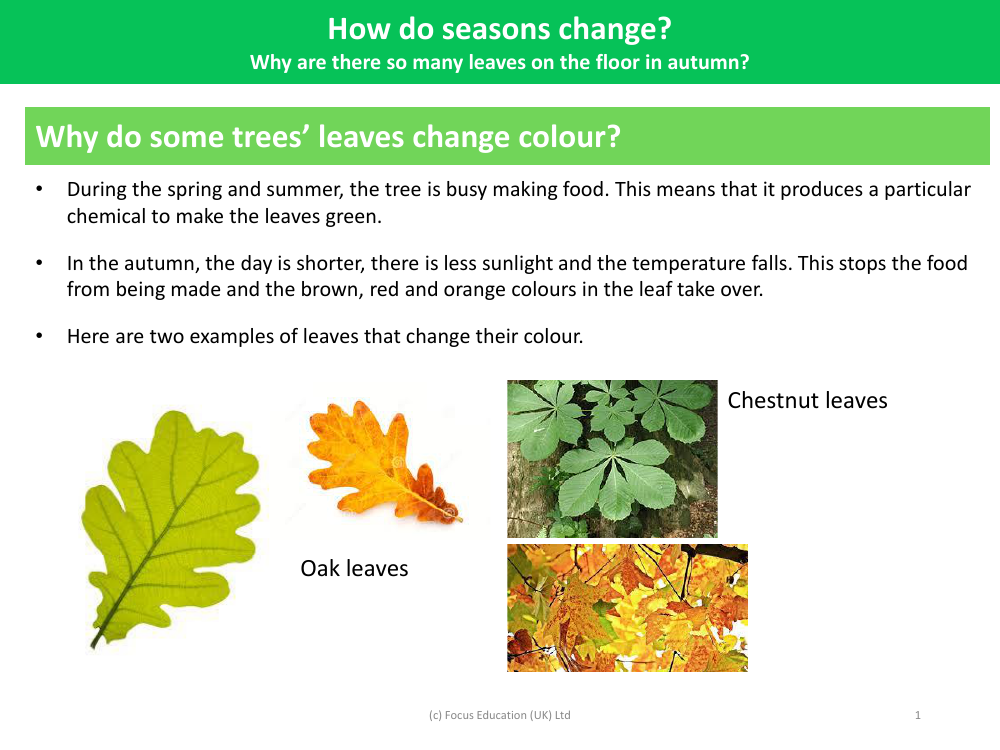Why do some trees leaves change colour? - Seasonal Change - Year 1

Science Resource Description
In Year 1, children learn about the fascinating changes that occur in nature with the seasons. One such change is the transformation in the colour of some trees' leaves. During the vibrant months of spring and summer, trees are actively producing food, which involves creating a chemical that gives their leaves a lush green hue. However, as autumn approaches, the days become shorter, sunlight diminishes, and temperatures drop. These changes signal the tree to halt its food production, allowing the natural brown, red, and orange pigments within the leaves to emerge and become visible. This seasonal shift is evident in the altered appearance of various trees, including the oak and chestnut, whose leaves are prime examples of this colourful transition.
With the arrival of autumn, children may also notice an abundance of leaves scattered on the ground. This seasonal leaf fall is a direct consequence of the trees' preparation for the colder months ahead. As the trees reduce their food-making processes and the green fades, the leaves eventually dry out and detach from the branches, creating a natural carpet of varying hues on the forest floor. This yearly cycle not only paints the landscape with a palette of autumnal shades but also plays a crucial role in the life cycle of the trees and the broader ecosystem.






